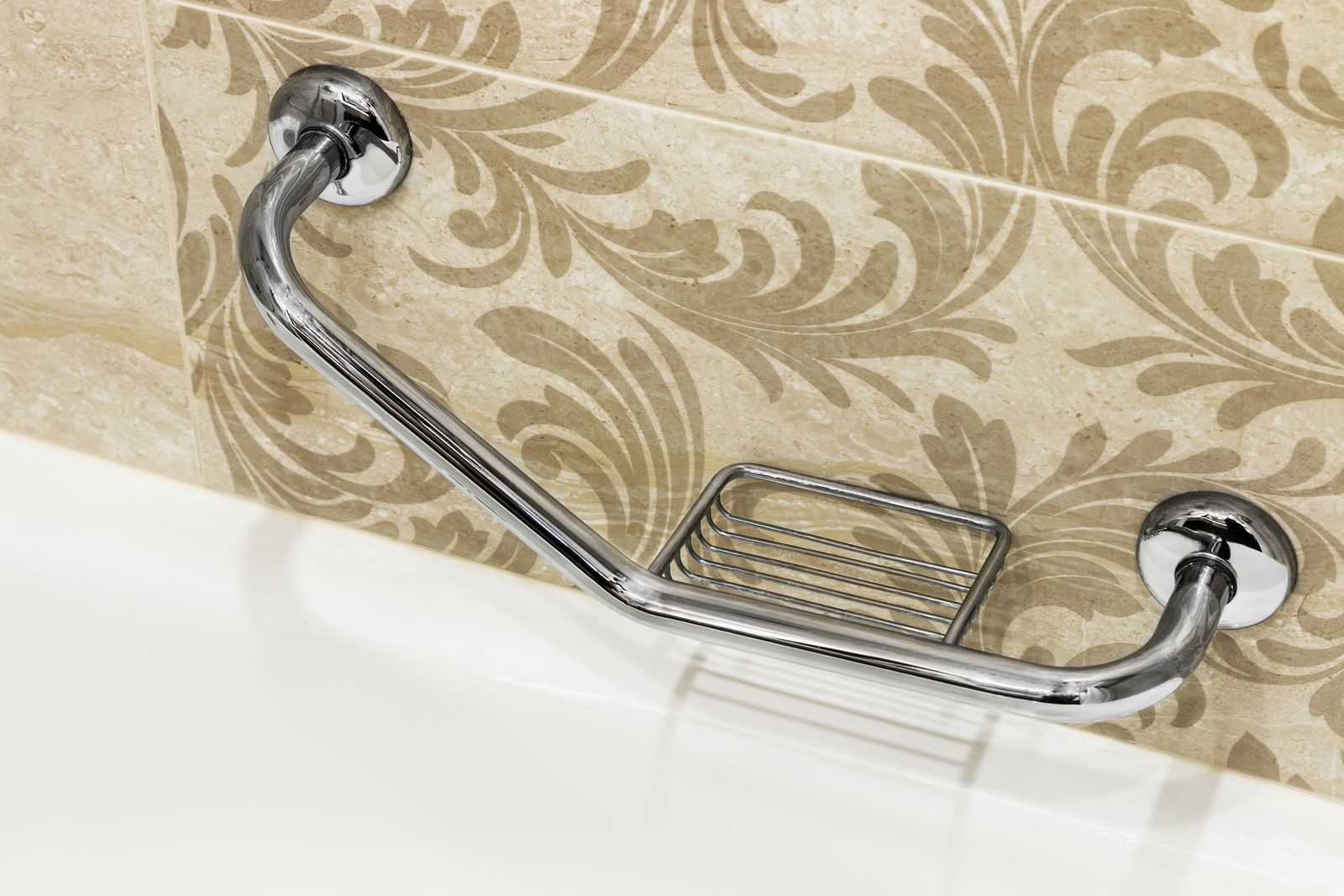
This combination grab bar and soap dish has the additional benefit of the 45-degree bend to provide more leverage by the user, and it returns into the wall to eliminate potential catching or pinching of clothing or skin.
Over the years, grab bars in the home – especially in the bathroom – have been downplayed and distanced from our conversations. We don’t want to utter these words. So, we have created many similarly-named devices to do the same thing. We have assists, assist bars, safety rails, handrails, shower bars, shower rails, safety assists, safety supports, and others. Notice that two terms often repeated in these descriptions are safety and assist.
It’s also interesting that the number one home improvement conducted by homeowners or requested from contractors is the installation of grab bars. We are now bold enough to actually call them what they are; however, if it makes us feel any better to label them by softer names, it’s OK. The key point is not what they are called but what they do for us.
Rather than quibble over what to call grab bars or refusing to have them because they may tend to indicate getting older, we need to accept them and realize that they are appropriate at any age. How many of us get into a car and ignore the seat belts because we are safe drivers? Don’t things beyond our control sometimes happen?
In addition, we now have so many choices in devices that are attractively crafted in a variety of styles, colors, and finishes to serve dual purposes as soap dishes, corner shelves, shampoo shelves, towel bars, and more so that we don’t have to just have the traditional looking grab bars if we want something more aesthetic and visually appealing.
How many of us may get up some morning and feel a little dizzy, have a cold or a sinus headache, suffer from an allergy, or not feel particularly well-rested and would appreciate something steady to hold onto or balance ourselves while entering the tub or shower? What if while entering we step on a wet patch on the floor of the bathroom or bathing surface and slip? What if the shock and pressure of the water stream coming from the showerhead cause us to react? What about a wet surface after we have been in the shower or tub for a while? Then, when we are ready to exit, what about the potential for slipping? What about reaching for a towel or having it cover our eyes as we are drying out hair upon exiting> How many of us have gotten soap or shampoo in out eyes and reached for a towel as we moved about quickly on a wet surface to resolve this?
There are just so many ways that we can potentially slip in the shower when it would be nice to have a steady, well-anchored support to grab onto.
Likewise, having vertical grab bars adjacent to a doorway at a landing – upstairs, basements, garage, or entrance – gives us the peace-of-mind of knowing that we can prevent falling backwards down the stairs or slipping from the landing as we are transitioning through the passageway.
Similarly, how many of us eschew handrails lining a stairway because they are there just for people with poor balance or mobility concerns and we feel perfectly capable of ascending or descending stairs without relying on them? Or, how many of us just accept that they are there (they are code by the way) and use or don’t use them as we feel the need but don’t focus on them as indicating or suggesting any particular need or inability to use the stairs safely on our own? The point is we likely don’t think anything about stair rails or handrails and just accept them. Occasionally we will encounter a stairwell with railings on just one side or none at all – although neither is technically permissible – and reach out to support ourselves on the wall if we have that need.
There’s always that time when we get distracted or our foot slips off one of the treads when we are glad that there is something to latch onto and keep from falling.
Many times, safety equipment is there to forestall the serious or severe event, but we should be glad to have them. How many of us – and fortunately the number is quite small – have experienced the protection of airbags in our cars? Still, we know they are there – just in case.
There are many other safety devices – which have other purposes as well – such as mirrors to see what is around us and especially behind us as we are changing positions or driving. Regardless of what we call our safety devices – grab bars or a softer-sounding name and other aids and helps in and around the home – it’s not the name that should cause us any great concern. It’s what the device provides to us and others in our living space (family members, guests, and visitors) in terms of safety. We can call it whatever we like, although grab bars are most often referred to as just that. It’s just that we know that we have the additional safety that such helps provide.
Safety is our chief aim in keeping people at home as they age in place, regardless of their current age or ability. Anything we can add to their living space to improve or augment that safety factor is a real plus.
